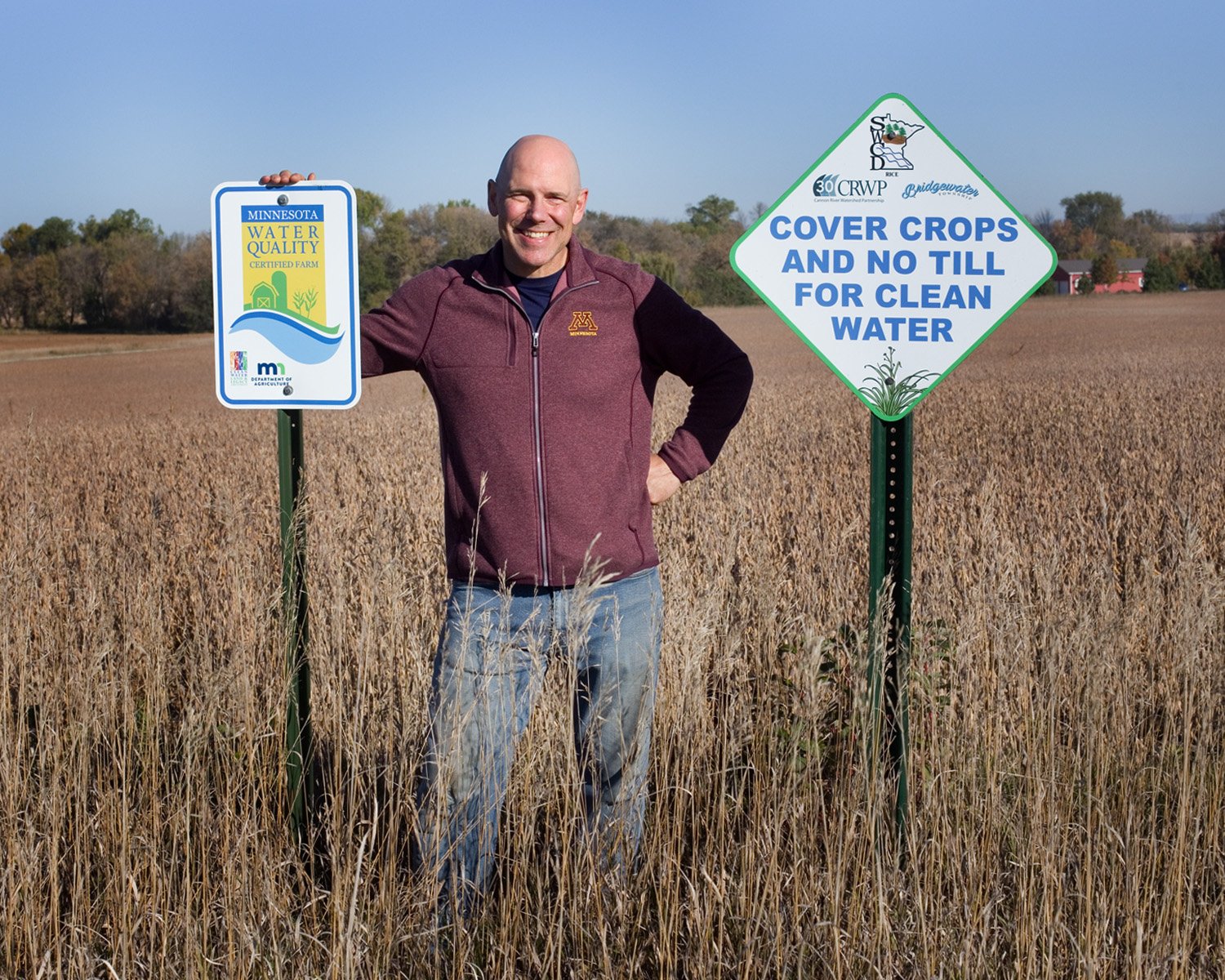Innovative Farmer Partnership Going Strong
Pictured: Northfield farmer Mark Legvold, Photo Credit: Margie O’Loughlin
Mark Legvold climbed into the cab of his combine on a sunny afternoon in early October. Harvesting is something he always looks forward to, but today he had a special passenger along: his three year old grandson.
Legvold said, “The little guy represents the fifth generation of our family farming in this area. We have a vested interest in keeping the soil and water healthy here.”
One of the fields Legvold farms is adjacent to Rice Creek, and he has been part of the Farmers Protecting Bridgewater Streams project since it began five years ago.
In 2018, Clean River Partners brought together a dozen local farmers concerned about declining soil health and increasing soil erosion along Rice Creek, a stream in Bridgewater Township just outside of Northfield and Dundas. Since then, participating farmers have planted cover crops each fall on about 1,000 acres of land in the Rice Creek watershed.
Cover crops include plants like annual rye grass, winter rye, radish, kale, and clover that are inter-planted with corn during the growing season or planted after soybean harvest in the fall. The plants provide additional cover for the soil all winter, until cash crops can be planted in the spring.
Continued monitoring confirms that planting cover crops, along with reduced tilling practices, improves soil and water quality by keeping nutrients in the soil and soil in the fields.
The lower reach of Rice Creek straddles both the urban expansion boundaries of Northfield and the neighboring town of Dundas. Seven-mile long Rice Creek is one of three self-sustaining brook trout streams in the Cannon River Watershed, and is the most-westerly brook trout stream in Minnesota.
Rice Creek is showing water quality improvements in the last five years, as the presence of the brook trout confirms.
Data derived from this project shows the impact that cover crops can have on reducing nitrates in tile drainage. Tile drainage from fields planted with cover crops had 30% less nitrate-nitrogen concentration than from fields planted without cover crops.
According to participating farmers, over the five years (on average), cover crops did not affect corn yields and actually increased soybean yields by 7%.
Farmers Protecting Bridgewater Streams has succeeded because of the strength of its partnerships. Those partners include the farmers, Clean River Partners, Rice County Soil and Water Conservation District, St. Olaf College, Fishers & Farmers Partnership, Bridgewater Township, Compeer Financial, Minnesota Department of Natural Resources, and Minnesota Pollution Control Agency.
Legvold said, “What farmers do in their fields directly impacts people at home. Farmers can sequester 1-2 tons of carbon per acre depending on how they manage their soil. Science has proven that too much carbon in the air accelerates climate change. Farmers can make a huge difference by not tilling the soil. Keeping topsoil on the field is just good agricultural practice.”
To expand on the success of this project, Clean River Partners is reaching out to more farmers, organizations, and communities who value profitable farms, fishable and swimmable lakes and streams, and clean drinking water.
Margie O’Loughlin is a Clean River Partners board member in Northfield, Minnesota. CRP works at the community level to protect and improve the Cannon River Watershed.

